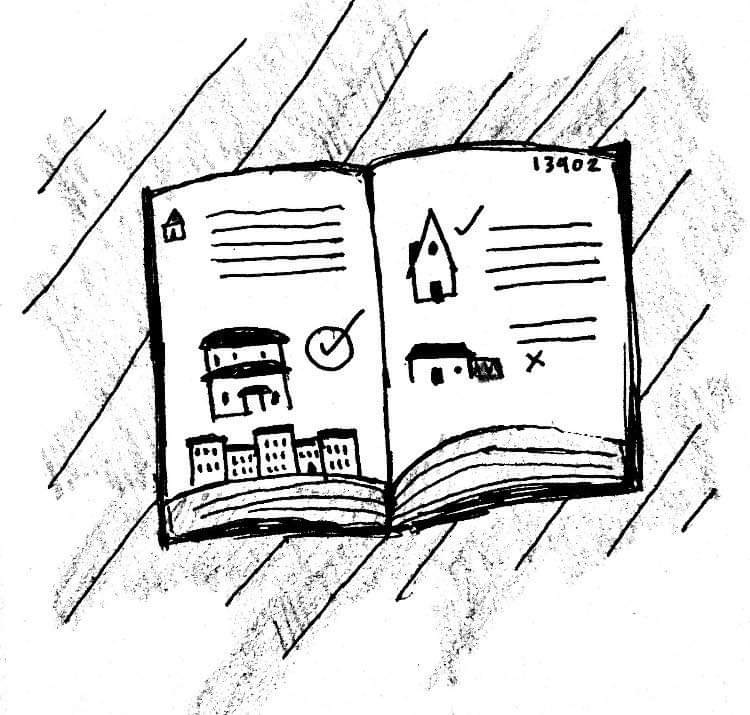Currently, the city of Binghamton is considering an overhaul of its zoning laws, an effort to address issues associated with the expanding student population living Downtown and on the West Side. Although this may sound like a good move, it’s important to consider the long-term effects of these changes to the local area — something that is difficult to do without hearing input from students themselves.
The lack of communication between the student body and city officials is not for lack of trying. Binghamton University administrators and student leaders sit side-by-side with city officials on the Town-Gown Advisory Board (TGAB), and a public hearing on the proposed changes to Binghamton’s zoning codes has been scheduled for this month.
Still, students seem unaware of potential changes, and that’s a problem, especially since the overhaul could pose several challenges for student housing in the future as BU looks to expand its graduate student population. On-campus housing is almost exclusively meant for the undergraduate student population, and while many undergraduate students opt to live off campus in large apartment complexes such as U Club Binghamton or 20 Hawley St., graduate students tend to seek out housing on the West Side. Luckily for them, there’s currently more beds than students living in the neighborhood, but the new zoning laws complicate that. More and more students are choosing Downtown houses over University housing to save money and live more independently. With the new limits on housing, some landlords have suggested that students may see the cost of rent increase as the market becomes tighter and tighter. This won’t occur for students already situated in their living arrangements on the West Side, but in the years to come, it’s a very real possibility for future students looking for new places to call home.
Additionally, the Editorial Board is troubled by some of the apparent reasonings behind these proposed changes. It’s easy to look at college towns like Binghamton and think only of the vastly negative impact students can have on the local environment, and should student housing become more concentrated and controlled, some of those annoyances may be lessened. Noise pollution could be contained to a smaller section of Binghamton, and new rules regarding off-site parking could curtail the currently unsustainable quantity of cars parked on the narrow streets of Binghamton’s West Side. But the proposed legislation talks of preserving “the character of the neighborhood,” and that indicates a lack of faith on the part of the city in more integrated communities. The prospect of explicit borders between student and local neighborhoods is an upsetting idea, especially since students bring so much life and vibrancy to many of the neighborhoods they reside in.
All in all, changes to zoning are much needed, and overall, the Editorial Board welcomes them, despite our concerns. Still, some issues exist, and student involvement in changes like these ensures the best outcome for students and locals alike. Keeping involved in community affairs helps to ensure that students contribute to Binghamton rather than passively live in the area for their schooling. Understanding the laws that will be passed, students’ roles in them and how they will affect those who live here permanently can only strengthen our relationship with the local community, ensuring that Binghamton locals receive benefits from our use of the area.
Municipal decisions that impact student-community relations are nothing new. Three years ago, BU came to an agreement with the city of Binghamton to install blue lights in the West Side. While the motion was initially met with praise, student organizations soon voiced concerns that it benefited students more than the community, and that the blue lights could lead to people of color being targeted or having negative interactions with local police. These worries led to an occupation of the Couper Administration Building, and the blue light plan was dismantled. In its stead, TGAB emerged as a symbol of the University’s and Binghamton’s commitment to sustaining a clear line of communication. Although TGAB is far from a perfect solution to the town-gown divide, significant student involvement, much like that seen in the blue light protests, is exemplary of how important it is for student voices to be heard in community affairs.
The upcoming meeting meant to provide a public forum for opinions on the proposed zoning changes is set to be held on Oct. 23 in Binghamton City Hall at 6:30 p.m. The Editorial Board encourages all students to pay attention to local government, as city officials might not have enough insight to predict how their policies would impact University life. This is an opportunity to engage with the people who live and work in the same city you do, all while asserting your rights and desires as a part of the community you belong to. Although you may not be around to see the latest zoning changes affect your living situation, the community’s voice would be incomplete without your own.



